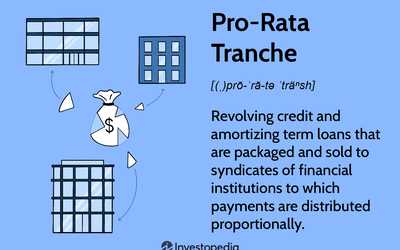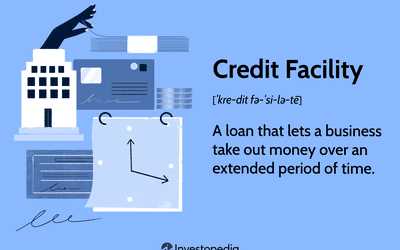What are Delayed Draw Term Loans?
Delayed draw term loans are a type of loan that allows borrowers to access funds in multiple tranches or disbursements over a specified period of time. Unlike traditional term loans, where the entire loan amount is disbursed upfront, delayed draw term loans provide flexibility by allowing borrowers to draw down funds as needed.
These loans are typically used by businesses or individuals who have a need for capital but do not require the full loan amount immediately. The delayed draw feature allows borrowers to access funds when necessary, which can be particularly useful for projects or investments that have phased funding requirements.
Delayed draw term loans are often structured with a commitment period, during which the borrower can request disbursements. The commitment period is usually followed by a repayment period, during which the borrower must begin repaying the loan. This structure provides borrowers with a window of time to access funds and then allows for regular repayment once the drawdown period is complete.
Overall, delayed draw term loans offer flexibility and convenience for borrowers who need access to funds over a period of time. By allowing for phased disbursements, these loans can help businesses and individuals manage their cash flow and fund projects or investments as needed.
Definition and Overview
A delayed draw term loan is a type of loan that allows borrowers to access funds in multiple disbursements over a specified period of time. Unlike traditional term loans, where the entire loan amount is disbursed upfront, delayed draw term loans offer flexibility by allowing borrowers to draw funds as needed.
How do Delayed Draw Term Loans Work?
Delayed draw term loans typically have a predetermined draw period, during which borrowers can request disbursements. The draw period is usually specified in the loan agreement and can range from a few months to several years.
During the draw period, borrowers can request funds from the lender based on their specific funding needs. The lender will review the request and, if approved, disburse the requested amount. Interest begins to accrue on the disbursed amount from the date of disbursement.
Once the draw period ends, the loan enters the repayment period. During this time, borrowers are required to make regular payments to repay the principal amount and accrued interest. The repayment period can vary depending on the terms of the loan agreement.
Benefits and Risks of Delayed Draw Term Loans
Delayed draw term loans offer several benefits to borrowers. First, they provide flexibility by allowing borrowers to access funds as needed, rather than receiving a lump sum upfront. This can be advantageous for projects with uncertain funding needs or those that require ongoing financing.
Additionally, delayed draw term loans often have lower interest rates compared to other types of financing, such as credit cards or lines of credit. This can result in significant cost savings for borrowers over the life of the loan.
However, delayed draw term loans also come with risks. Borrowers may be tempted to draw more funds than necessary, leading to increased debt and interest payments. Additionally, if the project or investment does not generate the expected returns, borrowers may struggle to repay the loan.
Who Can Benefit from Delayed Draw Term Loans?
Delayed draw term loans are particularly beneficial for businesses and individuals who require ongoing funding for projects or investments. This includes real estate developers, construction companies, and entrepreneurs launching new ventures.
Furthermore, delayed draw term loans can be useful for individuals who need financing for large purchases, such as home renovations or education expenses. By accessing funds as needed, borrowers can better manage their cash flow and avoid unnecessary interest payments.
How do Delayed Draw Term Loans Work?
Delayed draw term loans are a type of loan that allows borrowers to access funds in multiple installments over a specified period of time. Unlike traditional loans where the entire loan amount is disbursed upfront, delayed draw term loans offer flexibility by giving borrowers the option to draw down funds as needed.
Here is a step-by-step breakdown of how delayed draw term loans work:
- Application: The borrower applies for a delayed draw term loan with a lender. The lender evaluates the borrower’s creditworthiness and determines the loan amount and terms.
- Approval: If the borrower meets the lender’s criteria, the loan is approved, and the terms are agreed upon.
- Commitment Period: The lender sets a commitment period during which the borrower can access the funds. This period is typically several years.
- Drawdowns: During the commitment period, the borrower can request funds from the lender. The borrower can choose to draw down the entire loan amount at once or in multiple installments.
- Interest Accrual: Interest begins to accrue on the drawn-down funds from the time of each drawdown. The borrower is only responsible for paying interest on the amount that has been drawn down.
- Repayment: After the drawdown period ends, the borrower enters the repayment period. The borrower is required to make regular payments of principal and interest according to the agreed-upon terms.
Overall, delayed draw term loans provide borrowers with flexibility and control over their financing needs. They are particularly useful for businesses or individuals who have ongoing projects or expenses that require funding over an extended period of time.
Benefits and Risks of Delayed Draw Term Loans

Delayed draw term loans offer several benefits for borrowers:
- Flexibility: Delayed draw term loans provide borrowers with the flexibility to access funds when they need them, rather than receiving the entire loan amount upfront. This can be particularly beneficial for businesses that have varying funding needs over time.
- Cost savings: By only drawing down funds as needed, borrowers can potentially save on interest costs. They are only charged interest on the amount they have drawn, rather than the full loan amount.
However, delayed draw term loans also come with certain risks:
- Interest rate risk: If interest rates rise after the initial loan commitment, borrowers may face higher borrowing costs when they draw down funds. This can impact the overall cost of the loan.
- Market conditions: Businesses that rely on delayed draw term loans may be exposed to market volatility and economic downturns. If funding needs arise during a period of financial instability, it may be more difficult or costly to access the necessary funds.
- Complexity: Delayed draw term loans can be more complex than traditional term loans, requiring careful planning and management. Borrowers need to closely monitor their funding needs and coordinate with lenders to ensure timely access to funds.
- Commitment fees: Some delayed draw term loans may come with commitment fees, which borrowers must pay even if they do not draw down the full loan amount. This can add to the overall cost of the loan.
Overall, delayed draw term loans can be a valuable financing option for businesses that require flexibility in accessing funds. However, borrowers should carefully consider the benefits and risks before entering into such arrangements and ensure they have a clear plan for utilizing the funds effectively.
Who Can Benefit from Delayed Draw Term Loans?

Delayed draw term loans can be beneficial for a variety of individuals and businesses. Here are a few examples of who can benefit from these types of loans:
1. Small Business Owners

Small business owners who need additional capital to fund expansion projects or cover unexpected expenses can benefit from delayed draw term loans. These loans provide flexibility in accessing funds, allowing business owners to draw down the loan amount as needed.
2. Real Estate Developers
3. Startups
Startups often face unique financial challenges, and delayed draw term loans can provide the necessary funding to support their growth. These loans allow startups to access capital when needed, without having to take on the full loan amount upfront.
4. Seasonal Businesses

Seasonal businesses, such as retail stores or tourism-based companies, may experience fluctuations in cash flow throughout the year. Delayed draw term loans can help these businesses bridge the gap during slower periods and ensure they have the necessary funds to operate during peak seasons.
5. Individuals with Irregular Income
Individuals with irregular income, such as freelancers or commission-based professionals, may find delayed draw term loans beneficial. These loans provide the flexibility to access funds as needed, allowing individuals to cover expenses during periods of lower income.
| Benefits | Risks |
|---|---|
| Flexibility in accessing funds | Potential for higher interest rates |
| Ability to manage cash flow effectively | Additional debt obligations |
| Opportunity for growth and expansion | Potential for financial strain if funds are not used wisely |
Overall, delayed draw term loans can be a valuable financing option for those who need flexibility in accessing funds. However, it is important to carefully consider the benefits and risks before taking on this type of loan.

Emily Bibb simplifies finance through bestselling books and articles, bridging complex concepts for everyday understanding. Engaging audiences via social media, she shares insights for financial success. Active in seminars and philanthropy, Bibb aims to create a more financially informed society, driven by her passion for empowering others.
